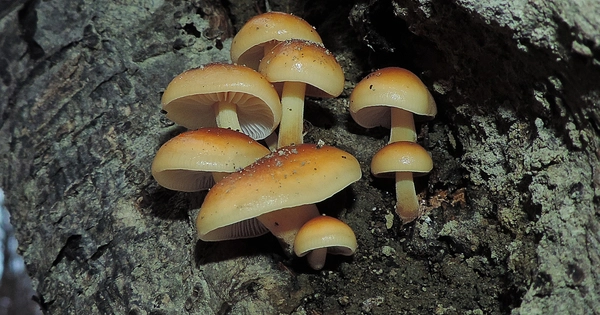Carnivorous or predaceous fungus are fungi that obtain some or all of their resources by catching and consuming microscopic or other minute organisms. Fungal predators, also known as mycophagous fungi, are an intriguing group of creatures in the fungal kingdom that gain nourishment by catching and devouring small animals, especially nematodes and other microscopic invertebrates.
Most fungi are recognized for their saprophytic or parasitic lives, but carnivorous fungus have evolved specialized structures to catch prey. More than 200 species have been described from the phyla Ascomycota, Mucoromycotina, and Basidiomycota. They often dwell in soil, and many species catch or stun nematodes (nematophagous fungi), while others attack amoebas or collembolan.
Dermatophytes are fungi that grow on the epidermis, hair, skin, nails, scales, or feathers of live or dead animals, as opposed to carnivores. Similarly, fungi found in animals’ orifices and digestive tracts are not carnivorous, nor are internal pathogens.
Arthrobotrys is a well-known genus of carnivorous fungi that includes species such as Arthrobotrys oligospora. These fungi create adhesive structures known as “traps” or “constricting rings” that ensnare passing worms. The traps are made up of specialized cells that respond to physical contact with the prey by quickly closing the trap and digesting the ensnared organism.
Another notable genus of carnivorous fungi is Dactylella, which also utilizes constricting rings to capture nematodes. In addition to these genera, there are several other groups of carnivorous fungi with diverse trapping mechanisms, including adhesive knobs, adhesive networks, and sticky knobs.
Insect infections that shock and colonize insects are not classified as carnivorous if the fungal thallus is primarily in the insect, as Cordyceps is, or if it clings to the insect, as Laboulbeniales is. All of these are examples of parasitism and scavenging.
Carnivorous fungus are commonly found in nutrient-deficient conditions such as acidic soils or decaying plant materials, where they supplement their nutrient intake by catching and consuming tiny creatures. Their ability to gain nutrients through predation demonstrates the extraordinary diversity and adaptability of mushrooms in a variety of ecological contexts. Furthermore, examining carnivorous fungi can reveal information about the mechanisms of predation and nutrition acquisition in microbial environments.
















